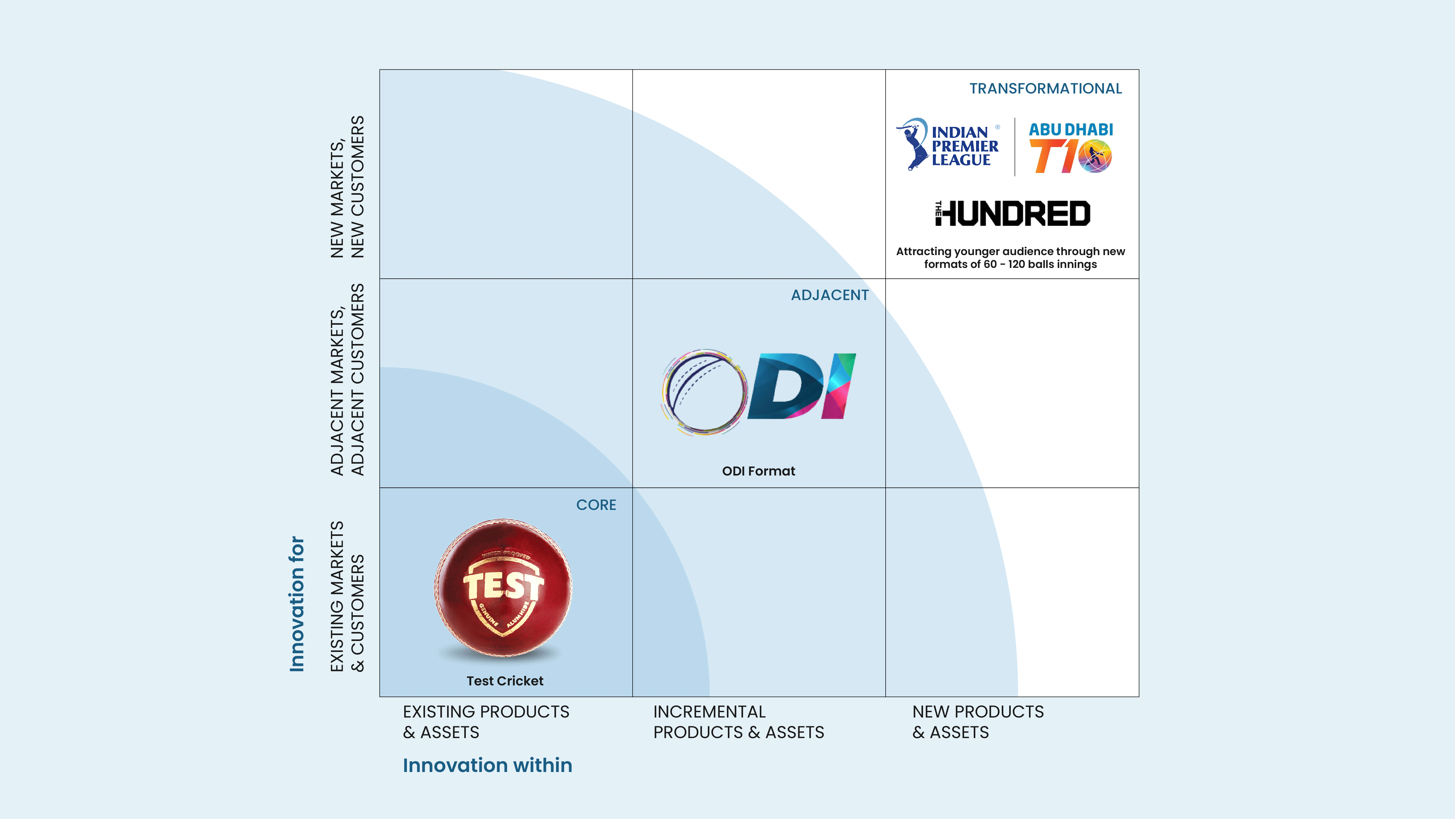Innovator Mapping Matrix is a culmination of research in a specific market, giving the user a high-level view of the relative positions of the market’s competitors. The framework distinguishes the set of competitors leading the innovation across different levels of operations.
By evaluating each company in the consideration for the ongoing innovations, the distinctions are made and then plotted onto a graph to create a visual summary of the exercise for the user.
This tool is inspired by the classic Innovation Ambition Matrix popularized by an article written in the Harvard Business Review by Bansi Nagji and Geoff Tuff.

Template is a 3×3 matrix where:
1. The X axis represents the area where the innovation is happening within the company: existing products, adjacent products, and new products.
2. The Y axis represents the segment the company is innovating for: existing market, adjacent market, and new market.
The plotting is done across three different levels as per the types of ideas or innovations:
1. Core (Existing, Existing),
2. Adjacent (Adjacent, Adjacent), and
3. Transformational (New,New)
Companies at the lower left of the matrix are core innovators, companies innovating in existing products for their existing customers/markets.
At the opposite corner of the matrix are transforming innovators, working on creating new products/services to serve new markets and customer needs.
In the middle are adjacent innovators, which can share characteristics with core and transformational innovations. An adjacent innovation involves leveraging something the company does well into a new space.
The ideal way to leverage this framework would be to first develop clear innovation objectives. The framework would then help in identifying peers who have done it successfully or are in the process and benchmark against them. After benchmarking, user would be able to define their innovation gap and can take one of the two approaches described below:
Traditional Approach: it is advisable to maintain a balance for the innovation portfolio as per the golden ratio provided by HBR and followed by Google as well- 70:20:10. Meaning that all of the resources to be used for innovation should be allocated in the manner that 70% should be used for innovation in the core level, 20% to adjacent one, and 10% to transformational one.
Ambition-driven Approach: For companies that are ambitious and want to disrupt the market, they may want to break out of the traditional ways and follow a more ambitious approach to innovation. This approach involves allocating more resources to the transformational level, for example, 30% core, 40% adjacent, and 30% transformational, depending entirely on the risk appetite of the user. It is important to note that this approach can be risky but also has the potential for high rewards.
After selecting a suitable approach, users should also keep an innovation target in mind, track its performance, and adjust the ratio as needed.
Potential use cases of Innovator Mapping Matrix include (but are not limited to):
Prioritizing Innovation Projects: The matrix can be used to prioritize innovation projects by assessing the potential impact of the projects, the resources required, and the likelihood of success
Managing Innovation Portfolios: Analysis can be used to manage innovation portfolios. This can be done by tracking the progress of projects, identifying risks, and making adjustments as needed
Innovation Benchmarking: Results of this exercise can help a company to draw a comparison of how it stacks up against the competition in terms of innovation
We have been using this framework across industries to help clients achieve their innovation goals.
For one of our clients, working on its innovation strategy, we performed an in-depth analysis of the market and leveraged Innovator Mapping Matrix to identify the leaders and ongoing trends across levels. The framework played a key role in navigating the efforts towards innovation objectives with some proven best practices adopted by peers.
https://healtharkinsights.com/case-study/innovator-mapping-matrix/
